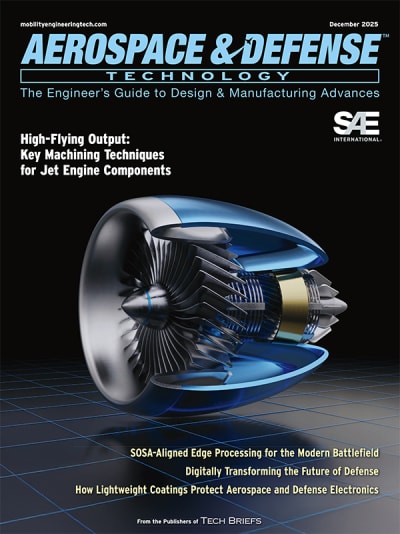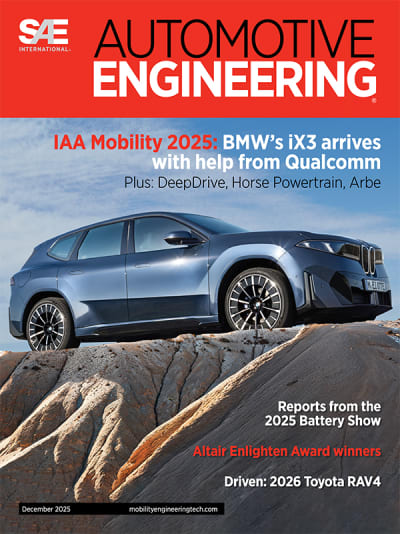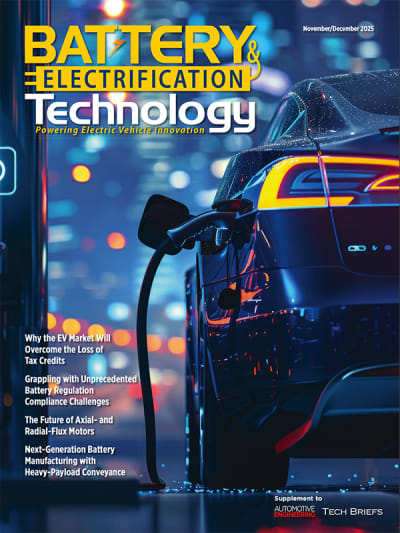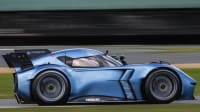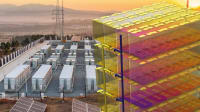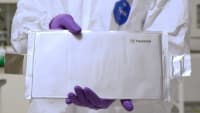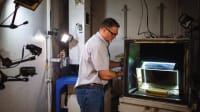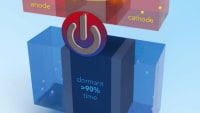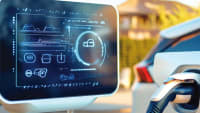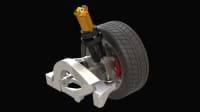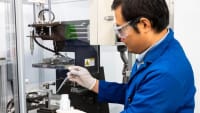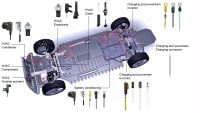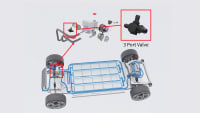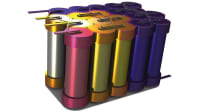Testing Times: Understanding the Impact of Climatic Conditions on EV Charging Times
Charging times are a major talking point around electric vehicles, but to fully understand charging performance you need to look at a wide range of climatic conditions.
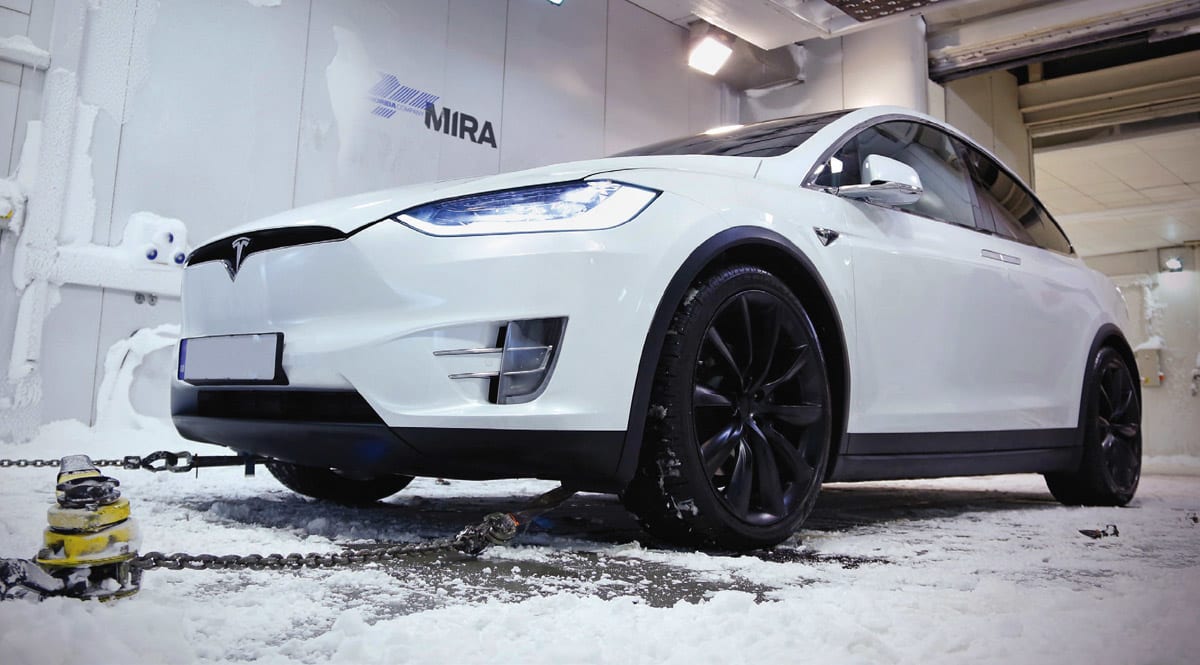
Range anxiety is perhaps the single biggest misnomer in electric vehicle technology. With a growing number of EVs now delivering 300 miles or more of real-world range, how many of us can truly claim to exceed that in a typical day?
In reality, it’s the prospect of finding and using a charger while you’re away from home that’s the least appealing part of EV ownership. The interminable wait spent drinking service station coffee while petrol and diesel cars hover briefly at the pumps can be a source of real frustration for EV motorists.
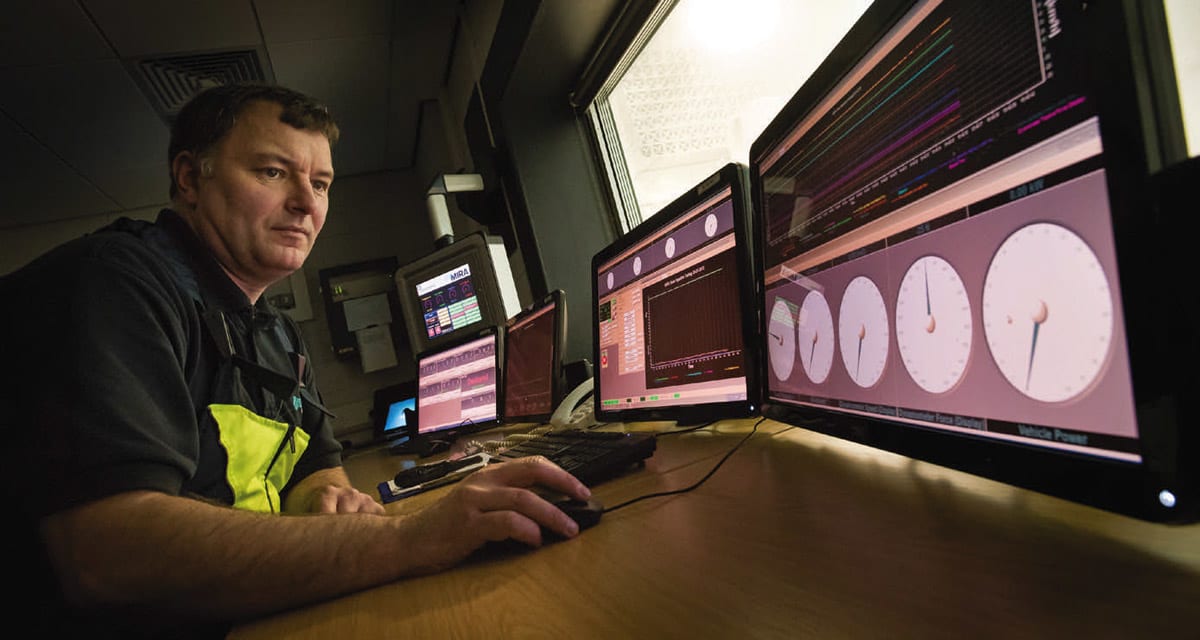
Not surprisingly, charging times have become a hot topic among automotive OEMs and consumers. Premium cars, in particular, are increasingly defined by their technology. A slick charging experience is one of the ways that premium manufacturers can distance their high-value luxury offerings from more mundane machinery. Faster charging can mean serious bragging rights among EV enthusiasts.
But, just as with range figures, there’s a growing awareness among consumers that a vehicle’s real-world charging performance doesn’t always match up to the manufacturer’s claims. In particular, temperature can have a huge impact on charging times.
As an example, one premium EV that we tested at HORIBA MIRA took 29 minutes to go from 10 to 80 percent SoC at a pleasantly warm 25 °C, drawing 107 kW from the charger at its peak. The same car tested at -30 °C — an entirely realistic overnight temperature for parts of Scandinavia and North America — took 52 minutes and drew just 50 kW.
At the other end of the scale, charging times at +40 °C ranged from 40 to 43 minutes, depending on factors such as whether or not the air conditioning was activated inside the cabin.

To a certain extent, this is an unavoidable consequence of physics. The electrochemical reactions inside a cell speed up at high temperatures, which can lead to faster degradation of the active materials. In the worst-case scenario, this degradation causes the internal resistance of an overheating battery to rise rapidly, setting off a chain reaction that may result in thermal runaway. To eliminate these risks and to ensure the health of the battery, the BMS system will often limit the power that the battery can draw in hot weather.
Cold temperatures present another set of problems. Here, the internal resistance increases due to the reactions slowing down, which makes it harder for the battery to absorb and store energy. Again, the BMS may limit C-rates at low temperatures for the sake of battery protection. And in both cases, modern EV batteries often use heating and cooling systems, which draw additional energy once the battery strays out of its ideal temperature range.
Harnessing Physics
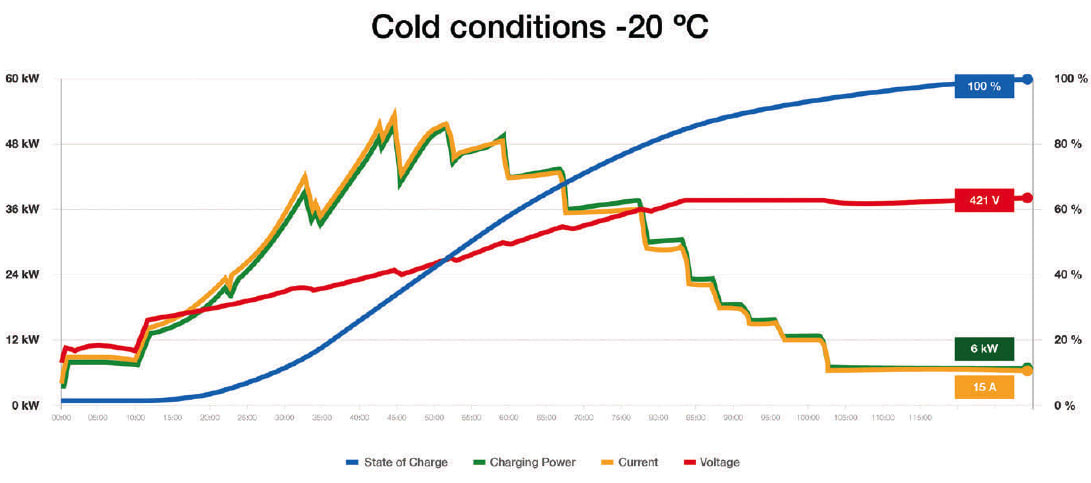
While the manufacturers can’t change physics, they can use it to their advantage. Factors such as cell chemistry, BMS strategy, and the design of the heating and cooling systems can all have a significant impact on charging performance as the temperatures fluctuate. And that means that one vehicle may charge appreciably faster than another, even with the same nominal charging capability.
Benchmarking these differences in performance against competitor vehicles is becoming an important tool for EV manufacturers, while deeper analysis can shed light on the design and calibration decisions used to achieve them.
To support this testing, and as part of the service provided to OEMs by HORIBA MIRA’s Vehicle Propulsion and Net Zero Solutions capability group, the company has combined a state-of-the-art 400 kW charger with a climatic wind tunnel, allowing manufacturers and other stakeholders to investigate charging performance over a wide range of temperatures and environmental conditions.
Crucially, unlike a lot of other test facilities, or indeed real-world testing in hot or cold locations, the charger is located outside of the test cell. This allows it to be maintained at a constant temperature, which eliminates any thermal effects on the charger itself. Operating at up to 800V, the Kempower charger is able to supply a sustained current of up to 500 amps, which is fed into the test cell via a liquid-cooled cable.
The facility has its own substation, which supplies the wind tunnel, the charger and the environmental control system. Inside the test cell and soak chamber, the temperature can be regulated between -40 °C and +55 °C. Humidity, which plays a key role in heating and cooling efficiency, can be set between 5 percent and 95 percent relative humidity. A full spectrum solar array provides up to 1200W/m2 (getting the cabin closer to 75 °C -80 °C). And an underbody ’hot road’ can add an additional 30 °C to the undertray.
A rolling road dynamometer allows the car to be ’driven’ inside this controlled environment, opening up a range of different test scenarios. It’s possible, for instance, to simulate a worst-case scenario where the car is driven at high speed across the desert immediately before being plugged into the charger at an ambient temperature of +45 °C.
Typically, vehicles are tested across a range of temperatures to characterize their charging performance. Each vehicle is driven around HORIBA MIRA’s proving ground to bring the battery down to the required SoC and then placed in a temperature-controlled soak room overnight prior to being tested. This process is then repeated across the desired temperature range.
Detailed Information
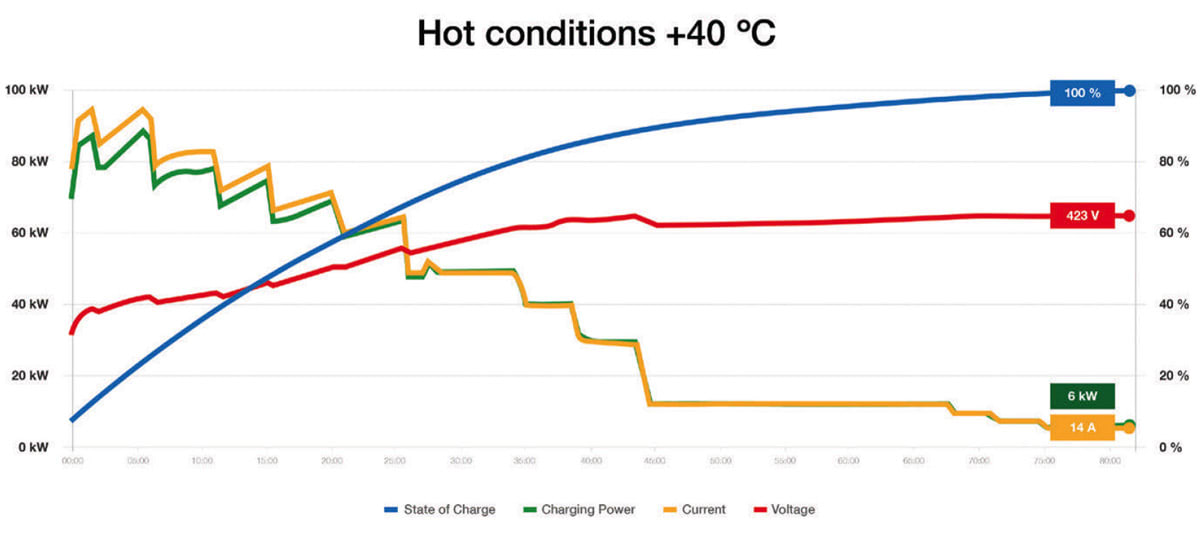
For benchmarking, the most important factor is generally the time taken to charge to a given SoC, but it is possible to infer a lot more information. Current clamps can be attached to major power consumers, such as cooling pumps, air conditioning compressors and heaters to monitor when they are in use. Thermocouples can be used to capture battery temperature and heat rejection from the power electronics. On top of which, we have continuous monitoring of the current drawn from the charger.
All this information can be used to build up a picture of the control strategy employed on competitor vehicles. Some, for instance, can be seen to de-rate much earlier in the charging process than might be expected. Others might employ pre-conditioning systems to prepare the battery ahead of charging or more aggressive heating or cooling strategies once connected to the charger. Similarly, it’s possible to investigate how other functions, such as cabin heating and ventilation, impact energy consumption during charging.
The need for accurate benchmarking will only increase as EV technology continues to advance. A number of carmakers have recently moved from 400V electrical architectures up to 800V, with 1,000V systems already on the horizon, allowing vehicles to charge at ever-faster rates.
Looking further ahead, direct cooling using components immersed in dielectric fluid could also extend power handling capabilities. Likewise, solid state electrolytes promise to significantly extend the safe temperature range of lithium-ion batteries.
Going Green
Vehicle testing can be an energy-intensive business. The passenger car climatic wind tunnel at HORIBA MIRA consumes in excess of 140 MWh of electricity per month and the automotive OEMs that test there are under increasing pressure to demonstrate CO2 reductions at every step of the development process.
To support its customers in the delivery of their sustainability targets, a new ground-mounted 7 mMWh solar system is currently being installed at HORIBA MIRA’s Nuneaton headquarters, which will power the whole site from the third quarter of this year.
This installation has the potential to reduce carbon emissions by 1,600 tonnes per year, making the facility one of the most sustainable test venues in the world, and pushing HORIBA MIRA another step closer to its commitment of being net zero for scope 1 and 2 emissions by 2030 and scope 3 by 2040.
Wherever the technology goes, thermal management will remain a key topic. Ultimately, testing across a broad range of different climatic conditions will be the only way to fully understand a vehicle’s charging performance.
This article was written by Ben Gale, Solution Leader for Energy Efficiency and Thermal Systems at HORIBA MIRA (Warwickshire, United Kingdom). For more information, visit here .
Top Stories
INSIDERLighting Technology
![]() Using Ultrabright X-Rays to Test Materials for Ultrafast Aircraft
Using Ultrabright X-Rays to Test Materials for Ultrafast Aircraft
INSIDERManufacturing & Prototyping
![]() New 3D-Printable Nanocomposite Prevents Overheating in Military Electronics
New 3D-Printable Nanocomposite Prevents Overheating in Military Electronics
INSIDERDefense
![]() F-22 Pilot Controls Drone With Tablet
F-22 Pilot Controls Drone With Tablet
Technology ReportAR/AI
![]() Talking SDVs and Zonal Architecture with TE Connectivity
Talking SDVs and Zonal Architecture with TE Connectivity
INSIDERManufacturing & Prototyping
![]() New Defense Department Program Seeks 300,000 Drones From Industry by 2027
New Defense Department Program Seeks 300,000 Drones From Industry by 2027
INSIDERAerospace
![]() Anduril Completes First Semi-Autonomous Flight of CCA Prototype
Anduril Completes First Semi-Autonomous Flight of CCA Prototype
Webcasts
Test & Measurement
![]() SAE Automotive Engineering Podcast: Additive Manufacturing
SAE Automotive Engineering Podcast: Additive Manufacturing
Information Technology
![]() A New Approach to Manufacturing Machine Connectivity for the Air Force
A New Approach to Manufacturing Machine Connectivity for the Air Force
Automotive
![]() Optimizing Production Processes with the Virtual Twin
Optimizing Production Processes with the Virtual Twin
Power
![]() EV and Battery Thermal Management Strategies
EV and Battery Thermal Management Strategies
Manufacturing & Prototyping
![]() How Packet Digital Is Scaling Domestic Drone Battery Manufacturing
How Packet Digital Is Scaling Domestic Drone Battery Manufacturing
Automotive
![]() Advancements in Zinc Die Casting Technology & Alloys for Next-Generation...
Advancements in Zinc Die Casting Technology & Alloys for Next-Generation...

